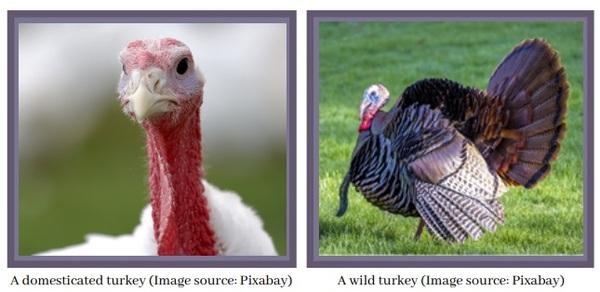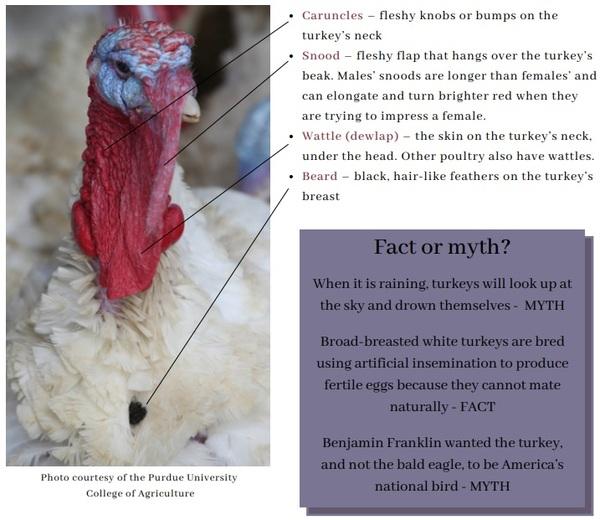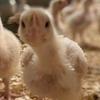Turkeys are an important American cultural icon and Thanksgiving dinner staple. In fact, it is tradition for the US president to “pardon” a turkey each year at an annual White House ceremony. The 2021 turkeys that participated in the ceremony were from Indiana.
The turkey is a relatively large, terrestrial bird (wild turkeys can fly for short distances; domesticated turkeys cannot fly) that is closely related to the chicken and quail and is native to North and South America. Turkeys were domesticated over 2000 years ago in Mexico. There are many different varieties of domesticated turkeys and most selective breeding initially focused on feather color and pattern. However, in the 20th century, the focus shifted from feather color and pattern to raising turkeys for meat production and conformation traits.
If you consume turkey at Thanksgiving, it is most likely a broad breasted white turkey, which has been selected for increased feed conversion efficiency and grows faster than heritage turkey varieties. Unlike the wild turkeys you might see in fields, the broad breasted white turkey is completely white-feathered. Heritage turkey breeds are slower growing and have different feather colors and patterns, such as the Royal Palm, Narragansett, and Bourbon Red, among others.
Turkey production in the US
More than half of the world’s farmed turkeys are produced in the US (about 229 million turkeys) and the US turkey industry is worth over $4.3 billion. Although 86% of American residents consume turkey products according to a 2019 study and 87% consume turkeys at Thanksgiving in particular, most people do not know much about how turkeys are produced or raised.
The majority of turkeys for commercial production (those that are processed and sold at the local grocery store) are raised in flocks that are the same age and sex in floor barns, that is, barns that have wood shavings or other bedding on the floor. Newly hatched turkeys, called poults, are placed in barns and raised until production age. The majority of barns are curtain-sided, which means that there are large curtains that can be raised or lowered for natural light and ventilation. Female turkeys (hens) are raised to about 14 weeks of age and 16 pounds of weight; these are the turkeys that are produced for the whole bird market, so in other words, the turkey that ends up at the Thanksgiving dinner table. Male turkeys (toms) are raised to about 18 weeks of age, weighing about 38 pounds at this age, and are used for products such as deli meats, sausages and turkey bacon.
Turkey characteristics
Turkeys have unique features that make them, well, turkeys. Turkeys are social animals that develop social hierarchies or pecking orders, so turkeys recognize individuals within their flock. Turkeys are active during the daylight hours and in the wild, will spend a lot of time foraging and scratching in search for food. Turkeys can see in color, in fact, like chickens, turkeys can see in the ultraviolet spectrum (see our
PEC newsletter on the chicken visual system).
As you are surrounded by images of Thanksgiving this turkey season, remember these fun facts for talking turkey to keep the dinner conversation going when all else fails.























